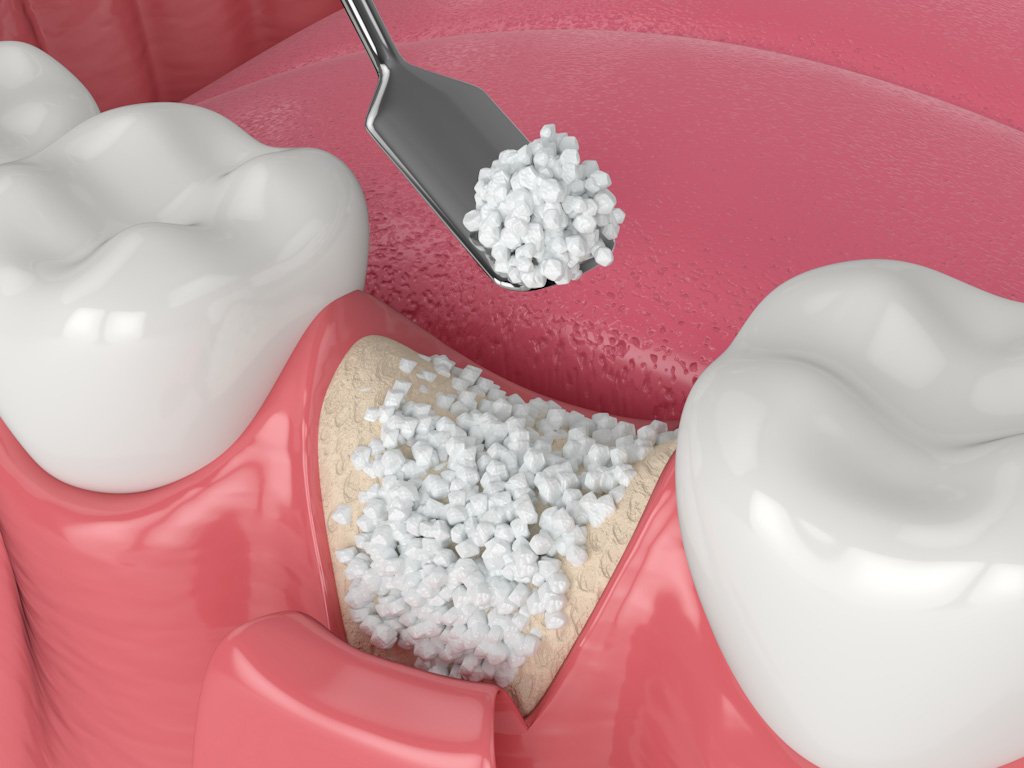Bone Grafting
What is bone grafting?
Bone grafting is a procedure in which bone is taken from one location (donor) and surgically placed into another (recipient).
Why is bone grafting performed?
Generally speaking, bone grafting in the maxillofacial region is performed for the purpose of placing dental implants. Less commonly, it is to improve the health of existing teeth
Bone grafting at the time of tooth extraction
When a tooth is extracted, and you would like to replace that tooth with a dental implant, it is usually recommended to have your oral surgeon place a bone graft into the socket. If no bone graft is placed, the socket walls tend to collapse somewhat during healing, and the volume of bone remaining for placing a dental implant may be compromised. A bone graft acts as a space maintainer at the site, to prevent collapse of the socket walls during healing. It also provides a sort of scaffold for the body to form its own bone within it. After about 3-6 months, that new bone is generally mature enough to accept the dental implant. This bone that forms does not last forever though; if a dental implant is not placed into that bone within 6-12 months or so, many patients experience bone loss at that site.
Delayed bone grafting
If a patient desires a dental implant at a site that has been missing a natural tooth for a long time, the bone has usually experienced atrophy with time. Implants require a certain volume of bone to be placed into, and if the bone is too thin to accept an implant, then bone grafting may be necessary to achieve the minimum volume. This is less straightforward than the above scenario, but can still be done. But each area in the mouth has unique anatomy and features that make it conducive to different types of grafting.
In order to assess the volume of the bone in your jaw, you will need to have a CBCT scan, which is an image that will show the 3-dimensional volume of your bone. From this, your surgeon can determine if it is sufficient to place a dental implant, or if you require a bone graft first.
When bone grafting is NOT needed
Bone grafting of the socket is certainly NOT routinely indicated following the extraction of wisdom teeth. Following wisdom tooth extraction, a blood clot forms in the socket, which starts the healing cascade. The bone will fill in. Since implants are never placed in these sites, there is no concern if the bone will not fill in as robustly as it was before.
If you would like to learn more, we would be happy to meet you and inform you of all of your options.

